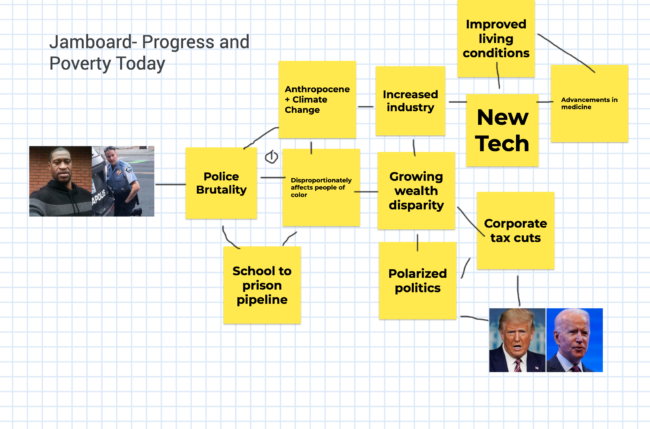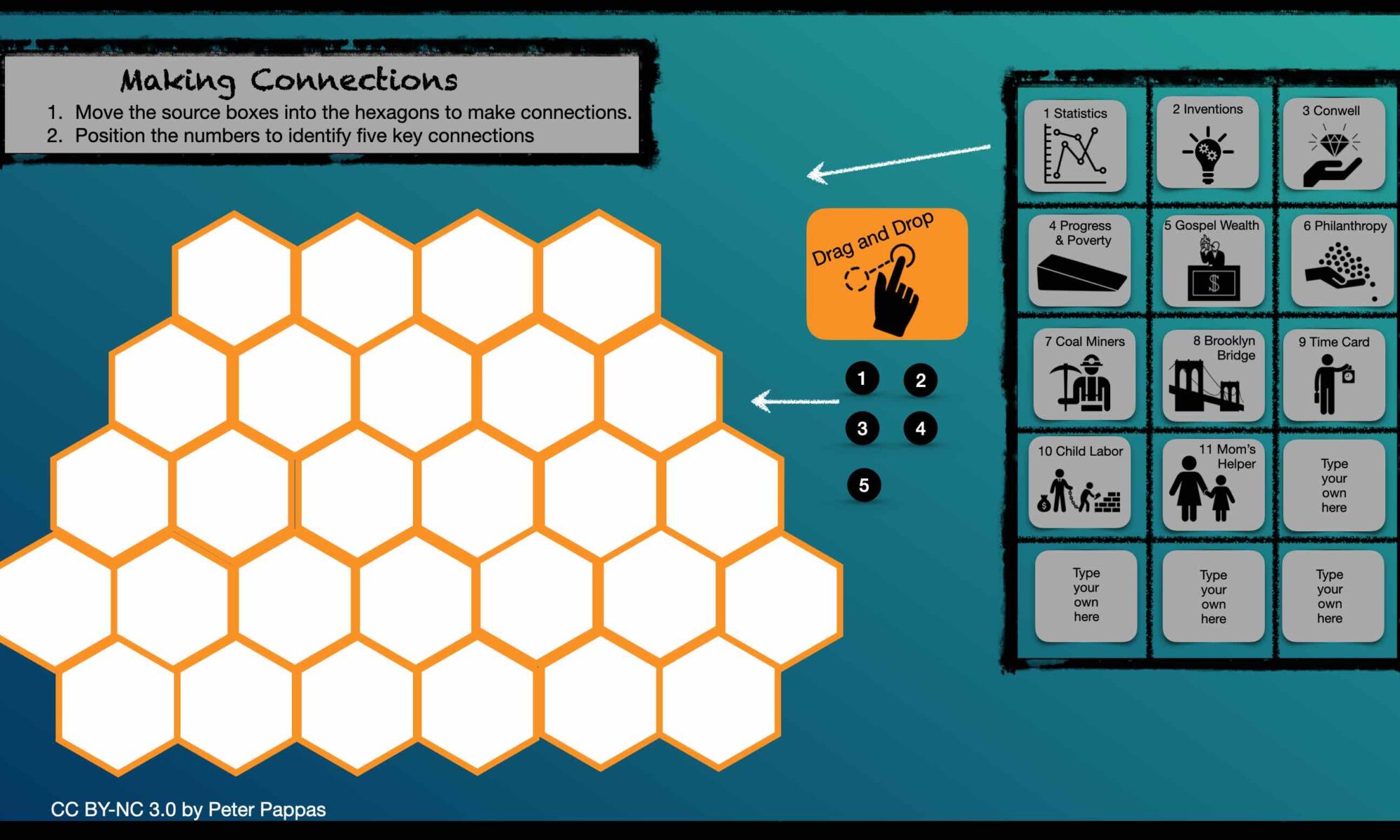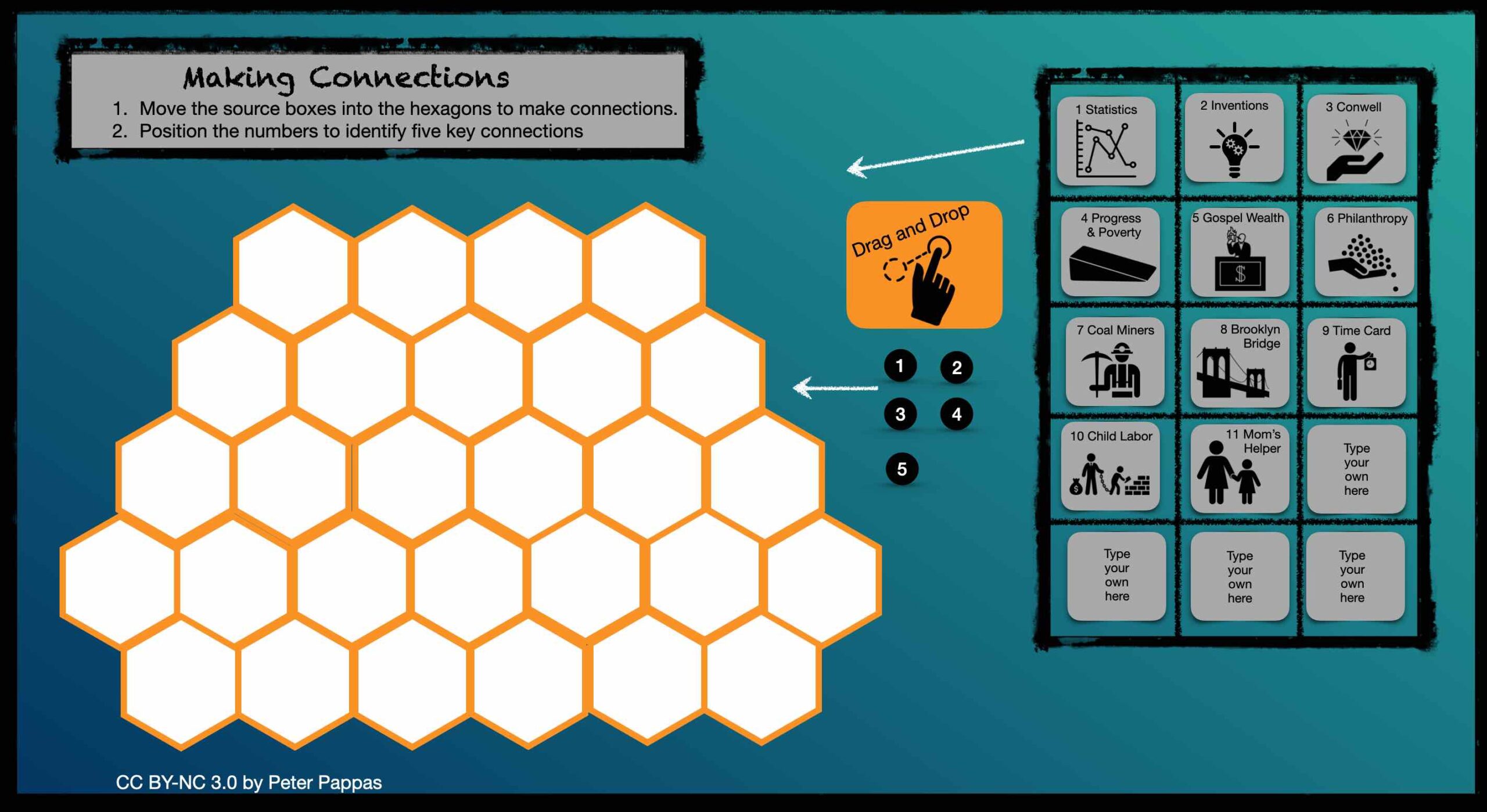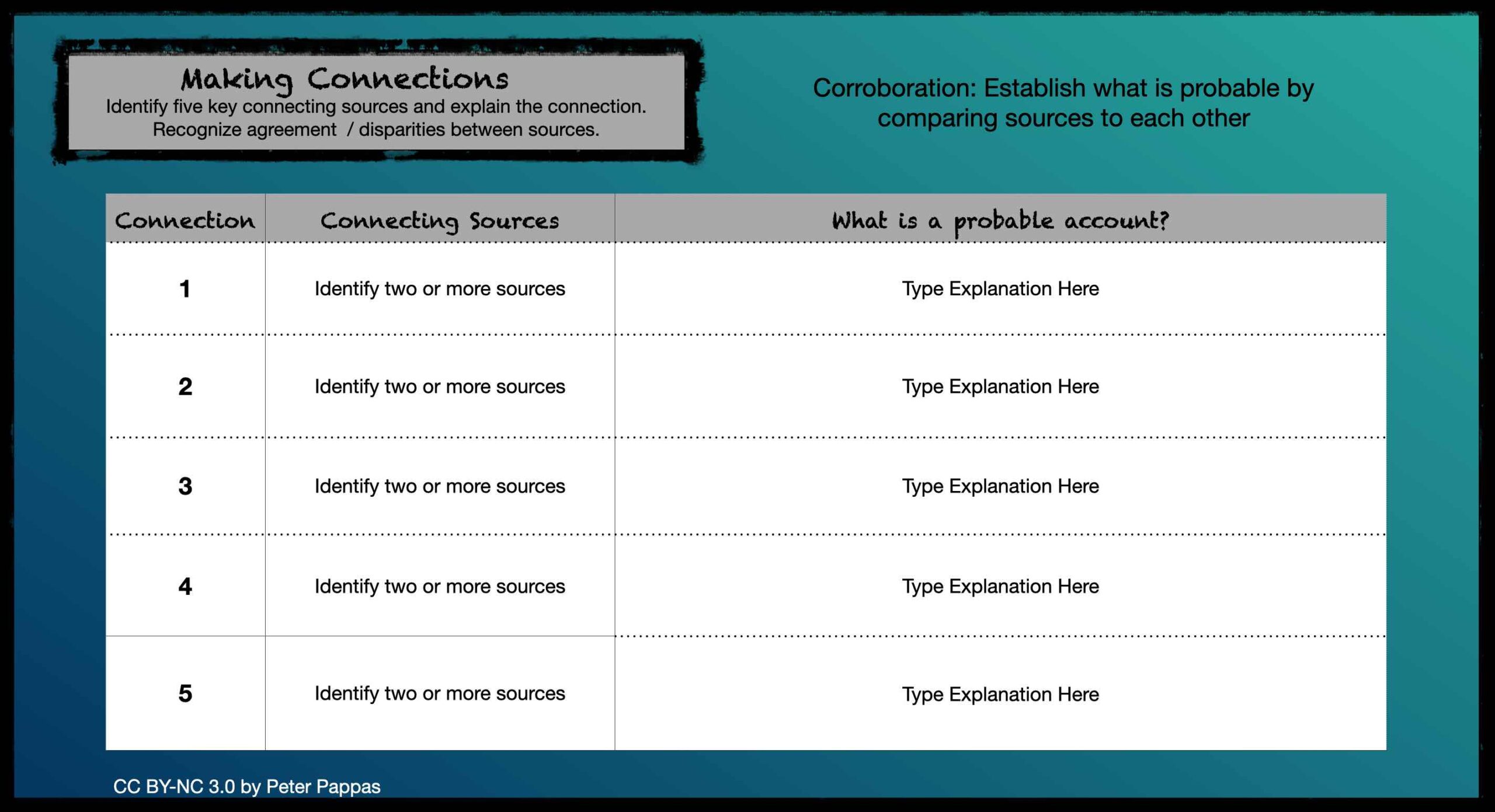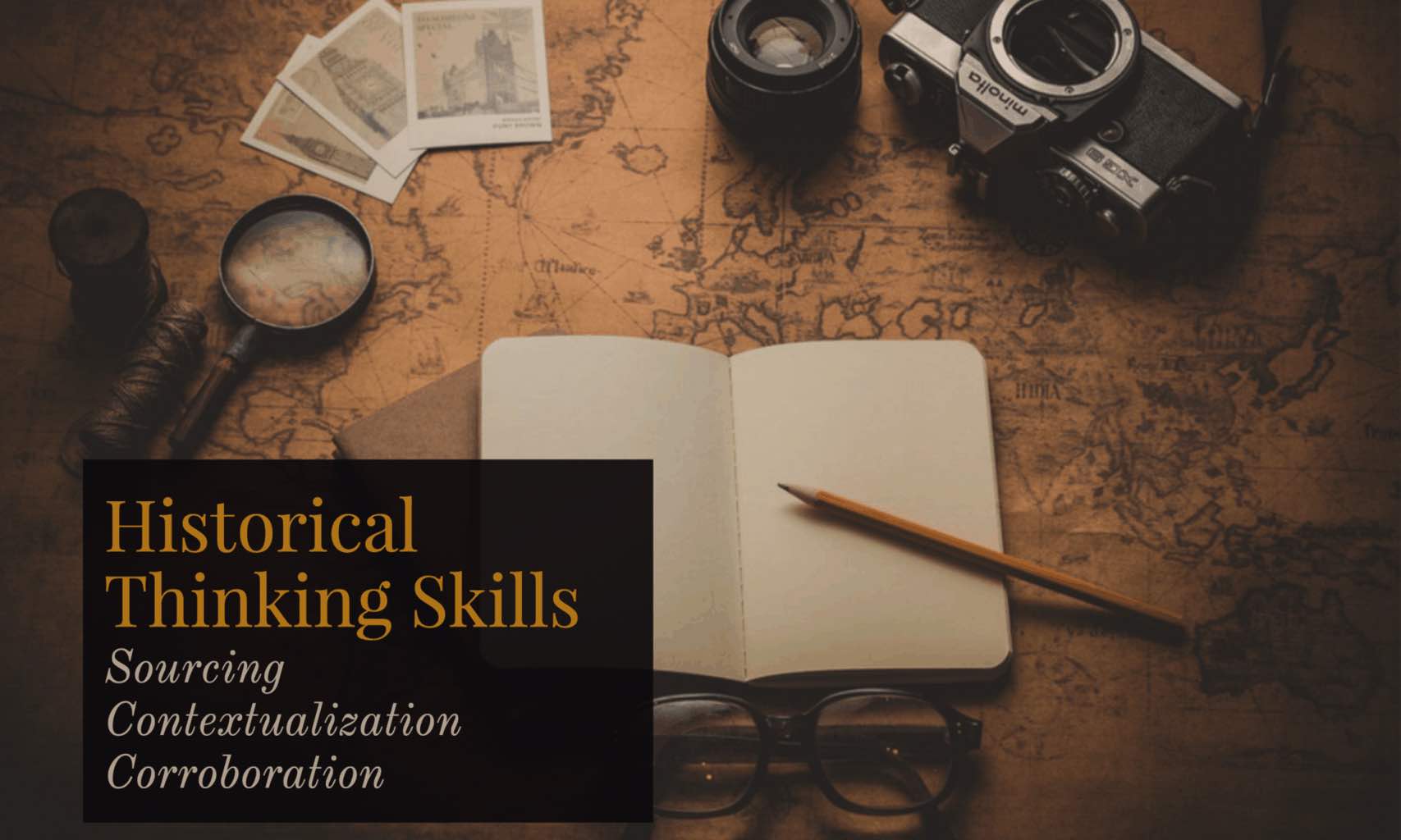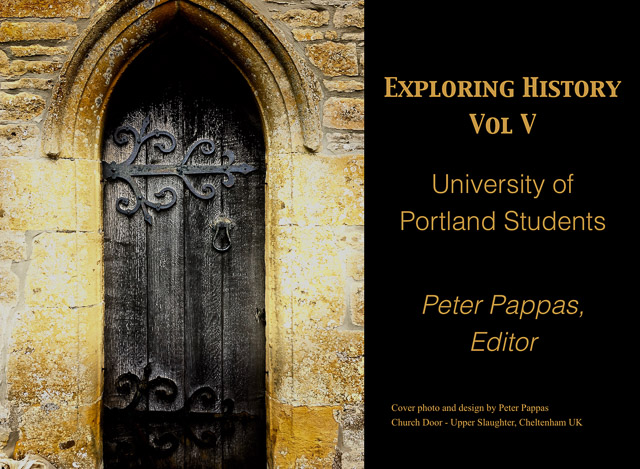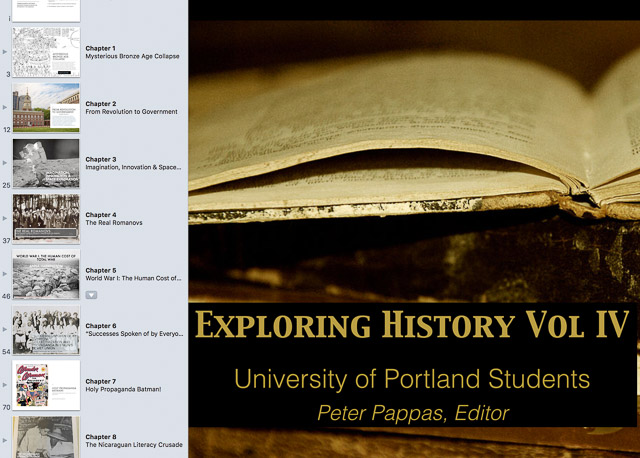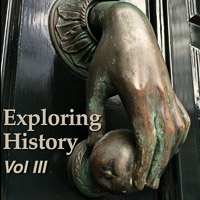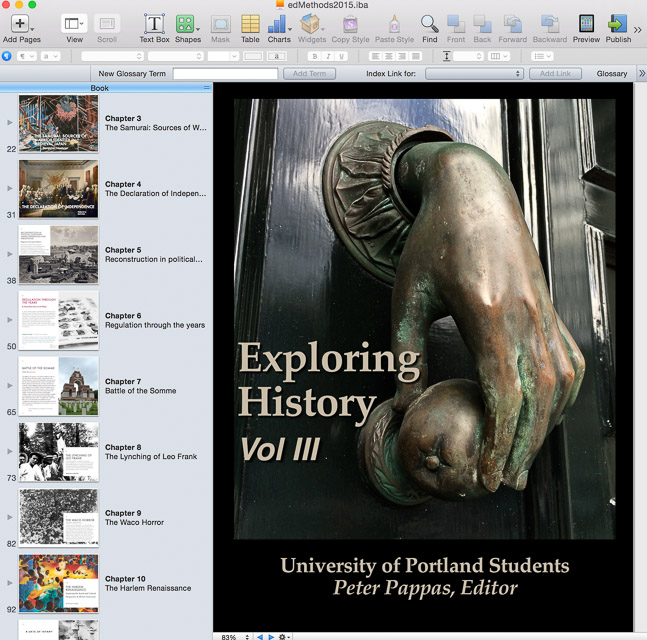I have been teaching my pre-service social studies students historical thinking skills based on the work by Stanford History Education Group. (SHEG). I created – what I call a “Hexagonal Thinking Corroboration Tool” to help them work with corroboration skills. For content we used a selection of documents from the late 19th century curated around the them of rise of industrial America.
I’m sharing the idea to help teachers assist students in making connections. You can easily modify with new content boxes to match your instruction.
Download and copy Keynote file from Google Drive
In my Ed Methods class, students worked remotely in teams to explore the documents in my book, Progress and Poverty in Industrial America (available free at iTunes). Also available online as a Microsoft Sway. We used the 11 sources to create a graphic organizer that responds to the essential question: “How do we evaluate the social costs and benefits of technological innovations?”
They had read all the documents in advance of class. As part of our Zoom class session, I put them in breakout groups and supplied them with a Keynote file “Hexagonal Thinking Corroboration Tool.” Corroboration prompts are from SHEG. This thinking tool was inspired by this post. Keynote design adapted from here.
Instructions:
Work with the members of your breakout group to corroborate the source readings.
- Move the source document boxes into spaces on the grid.
- Arrange the boxes so you can make connections between two or more source documents.
- When you have made an association between two or more documents, move one of numbers to that point
- Use the final slide to identify five key connections among the documents.
- Corroborate the sources in the connection and create an explanation of what you belief to be the most probable account.
As a final exercise, I supplied them with a Google Jamboard and asked them to evaluate the question “How do we evaluate the social costs and benefits of technological innovations?” in the context of the modern world.
